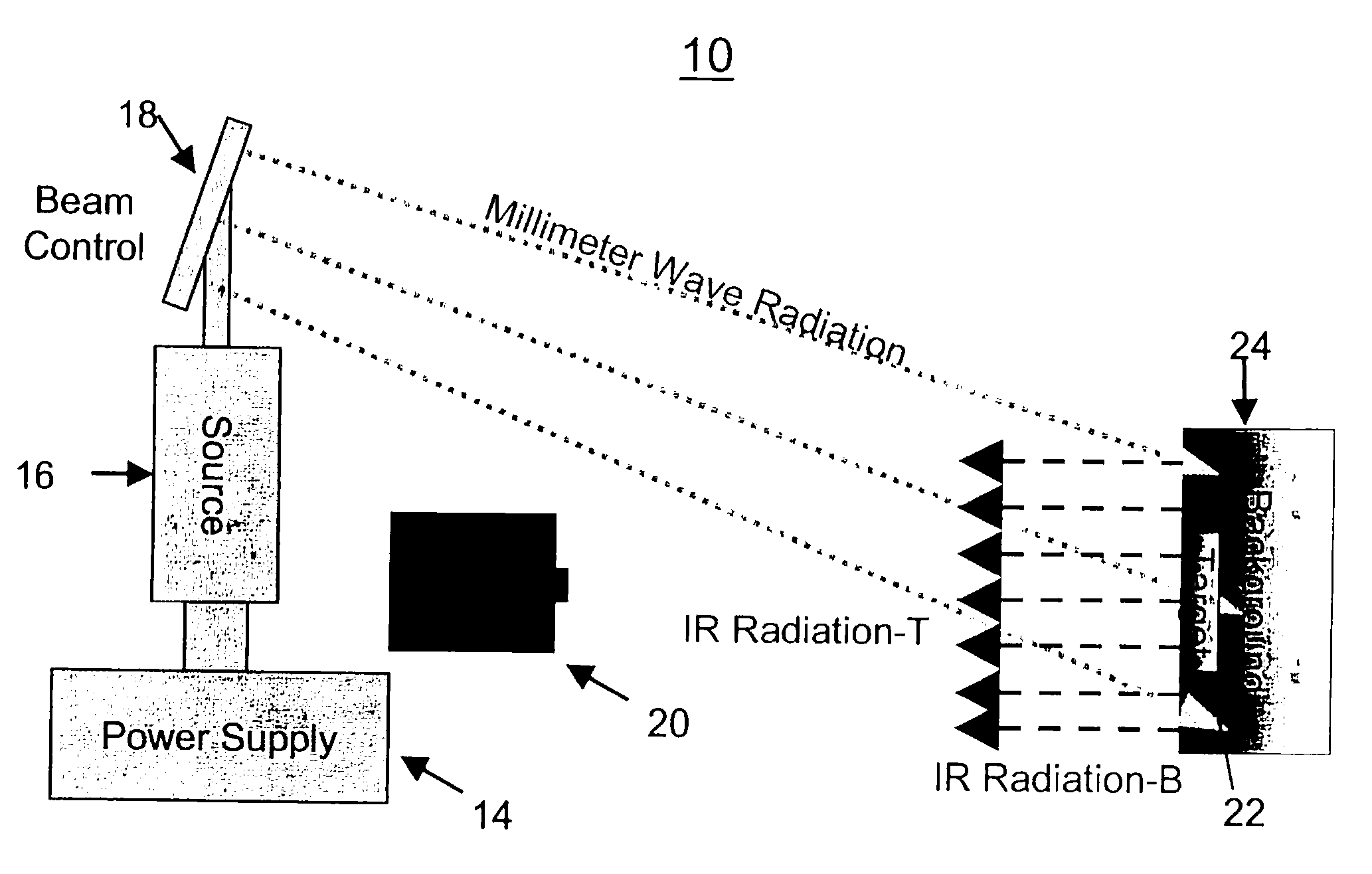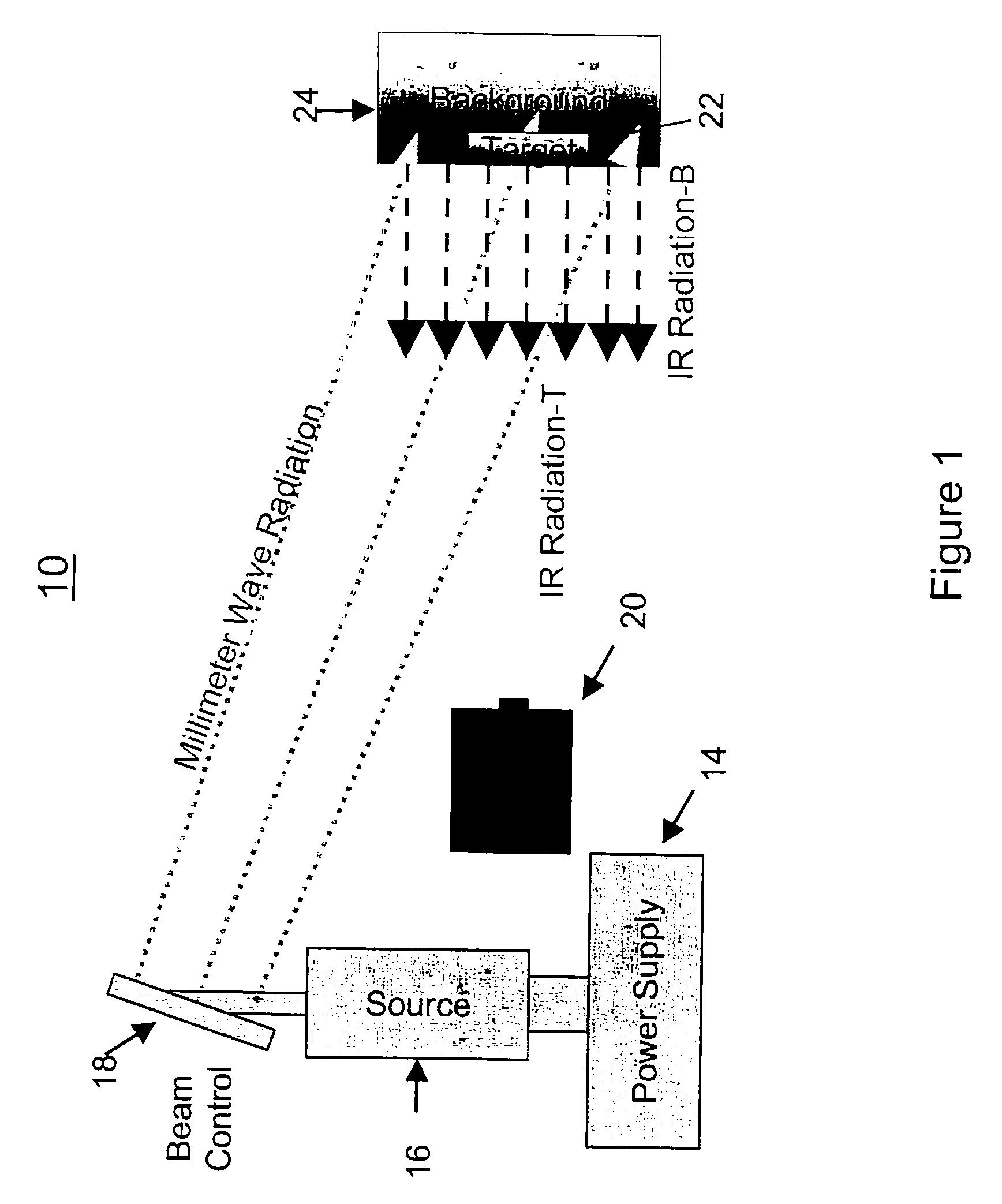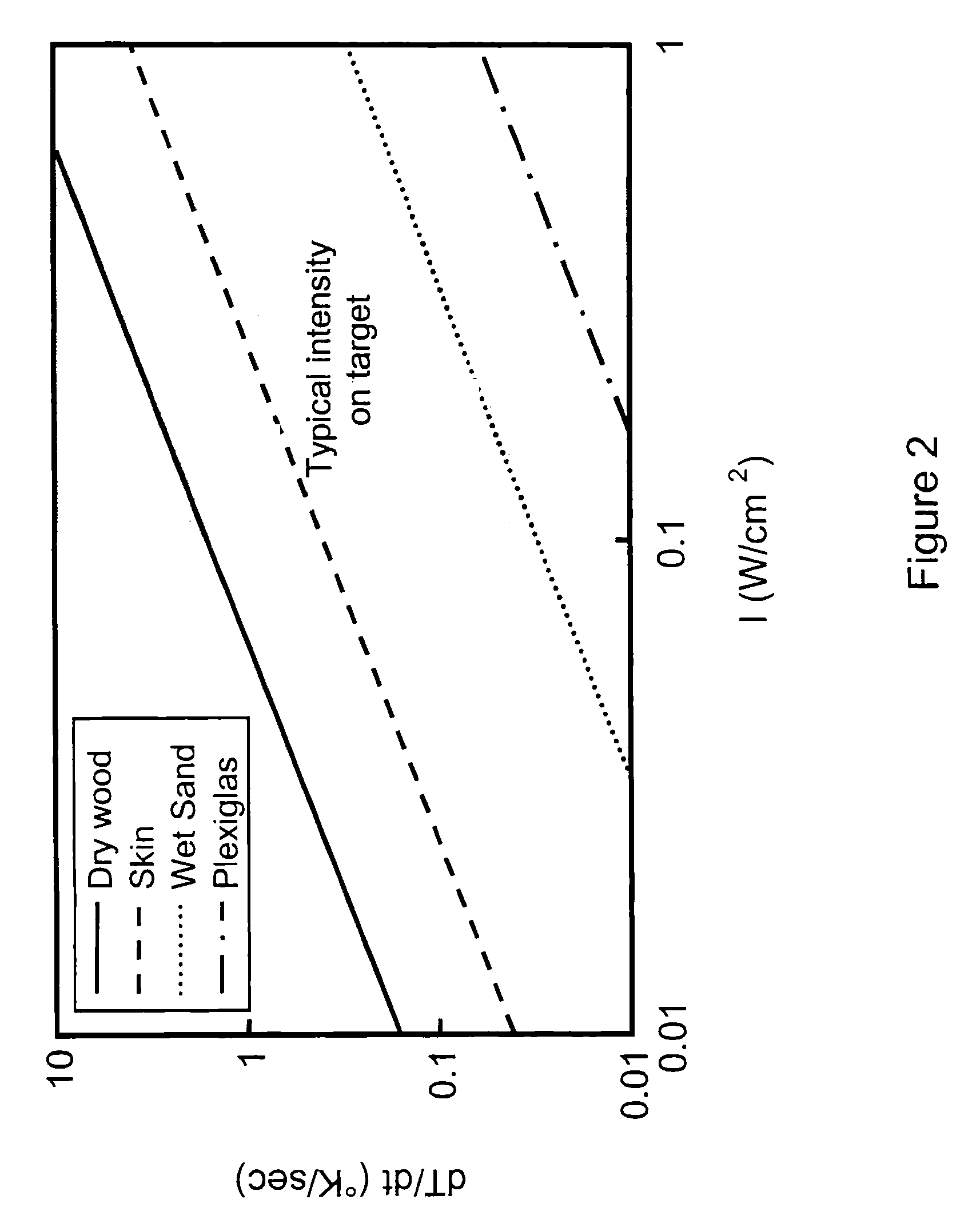Long range active thermal imaging system and method
a thermal imaging and long-range technology, applied in radiation thermography, optical radiation measurement, instruments, etc., can solve the problems of large amount of energy required on target to produce measurable signatures, prohibitive large antenna size required for conventional long-wavelength microwave systems with long standoff distances, and severe limitation of radar systems resolution
- Summary
- Abstract
- Description
- Claims
- Application Information
AI Technical Summary
Benefits of technology
Problems solved by technology
Method used
Image
Examples
Embodiment Construction
[0035]FIG. 1 shows a system 10 for active thermal imaging according to the invention using a millimeter-wave source (ATIMS). The system 10 includes a high voltage power supply 14, an appropriate microwave source 16, a beam controller system 18, and an infrared (IR) imaging system 20. Microwave source 16 in one embodiment is a continuous wave (CW) gyrotron for generating millimeter-length microwave radiation. The beam controller 18 preferably includes microwave components for smoothing, focusing, and directing the beam. Radiation is directed by the beam controller 18 toward a target 22, which in practice is typically surrounded by a background 24 with different material properties than the target 22. Due to the short wavelength of mm-wave radiation, the spot size of the radiation illuminating the target 22 at ranges of several hundred meters can be relatively small, thus producing sufficient intensity to heat the target and background to slightly different temperatures. This temperat...
PUM
 Login to View More
Login to View More Abstract
Description
Claims
Application Information
 Login to View More
Login to View More - R&D
- Intellectual Property
- Life Sciences
- Materials
- Tech Scout
- Unparalleled Data Quality
- Higher Quality Content
- 60% Fewer Hallucinations
Browse by: Latest US Patents, China's latest patents, Technical Efficacy Thesaurus, Application Domain, Technology Topic, Popular Technical Reports.
© 2025 PatSnap. All rights reserved.Legal|Privacy policy|Modern Slavery Act Transparency Statement|Sitemap|About US| Contact US: help@patsnap.com



